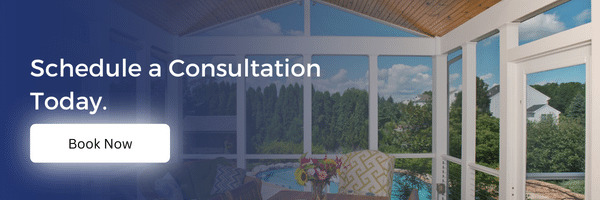How Much Does It Cost to Build a Custom Home in Lehigh Valley?
When you’ve decided that a custom home project is the best option for you and your family to get the room you need and the style that best reflects your tastes, your first question will likely be, “what will it cost to build a custom home?” Determining the cost of your custom home in Lehigh Valley will depend on several factors, however, there are industry averages you can use as base knowledge.
Lehigh Valley Home Costs Per Grade
Luxury or Upscale Home Pricing
A luxury home is classified as 90% of its finishes and fixtures being high-end. Designer light fixtures, a Carrera marble slab backsplash, custom bathroom tilework, solid wood custom cabinetry, hardwood or ceramic tile flooring, statement ceilings, and smart appliances are just a few examples of luxury-grade finishes to include in your Lehigh Valley custom home. A luxury home could cost around $400 to $550 per square foot.
Semi-Luxury Custom Home Pricing
A semi-luxury home will consist of around 50% luxury or high-end finishes and amenities and 50% midrange finishes. Designing a semi-luxury home will require a balance of choosing your wish list items where it matters most and choosing midrange-grade finishes where you’re willing to compromise. At this level of a custom home, your price per square foot could cost between $300 and $400 per square foot.
Midrange Custom Home Pricing
A midrange custom home requires quite a bit more compromise. Stock cabinets without customization, standard appliances, builder-grade light fixtures, and little to no natural stone tile or countertops are typical of a midrange custom home. High-end finishes can be chosen for a midrange custom home but will be balanced with lower-quality finishes elsewhere. Expect a midrange custom home in Lehigh Valley to cost up to $200 per square foot.
What Affects the Cost of a Custom Home?
Custom home estimates are determined by several factors, including the grade of finishes, your square footage and room types, the labor needed to complete your project, and the delivery method you choose. Custom homes rarely fit neatly into a category, like in the above examples, so your custom home project cost will depend on your unique design goals. How does each factor affect the cost of your custom home?
Finishes
A big factor in price per square foot will be the finishes you choose in your custom home. Choosing finishes that you’ll need hundreds of square feet of will drive your overall costs much higher when you opt for a higher-end product. For example, hardwood flooring can cost on average $12 per square foot, but reach well beyond depending on the type of wood; whereas luxury vinyl wood look flooring can cost around $5 per square foot.
To keep your budget balanced, reel in costs by compromising on some finishes to be able to splurge on your wish list finishes. If a marble waterfall kitchen island is important in making your custom home dreams come true, compromise by choosing a midrange finish elsewhere, like your bathroom tile.
Home Size
A larger home will, of course, cost more than a smaller home. However, many people don’t know that a larger home will cost less per square foot than a smaller one. Larger homes tend to have more open space, which requires fewer materials and labor than homes with less open spaces and where more complex rooms take up a larger proportion of the overall square footage.
For example, Home A has three bedrooms, two and a half bathrooms, an average living room, and an average kitchen space. Home B has five bedrooms, three full bathrooms, a larger living room, a den, a dining room, and above-average kitchen space. The larger home has more square footage but most of the additional square footage is rooms where the price per square foot is lower.
If you’re deciding how many square feet to include in your custom home, go for the extra bedroom for guests and the second family room. You’ll be grateful for the extra living space and a place for guests while bringing down your price per square foot.
Labor Costs
The design and finishes you specify will come with different labor requirements or scope of work. A complex floor plan and specialty finishes that require subcontractors with specific trade skills will require more specialized labor, which will add to your final cost. Installation and construction can consume around 35% to 50% of your total budget, with the percentage depending on your custom home design. Your designer can guide your decision-making process to save on labor based on your custom home design choices.
Design-Build vs Design-Bid-Build
The traditional design-bid-build delivery method is believed to be the standard, but this can cause higher custom home costs, not to mention unnecessary complications. You’ll hire an architect to design your home, seek bids from builders, and will likely need to alter your design plans or product selections with the guidance of a builder and risk sacrificing efficiency and breaking your budget. The design-bid-build method is wrought with miscommunication, the possibility of conflicting professional styles, and a design process that’s lacking the industry knowledge of an experienced builder.
The design-build method, on the other hand, centers collaboration between you, a designer, and a builder from the beginning. Your designer and builder will work together to create a design and product selections that are feasible, within your budget, and achieve your design vision. Communication channels are already well established and the compatibility of their professional experience will inform every aspect of your successful custom-build experience.
Penn Contractors is a high-end design-build firm that has been creating beautifully designed spaces with expert craft for decades in Lehigh Valley. Our priority is your custom home-building experience, so we focus on communication, collaboration, and transparency. The combination of our industry knowledge and design experience offers clients a seamless full-service experience. Contact Penn Contractors to schedule a consultation and learn more about our process.
%20(1).jpg)
